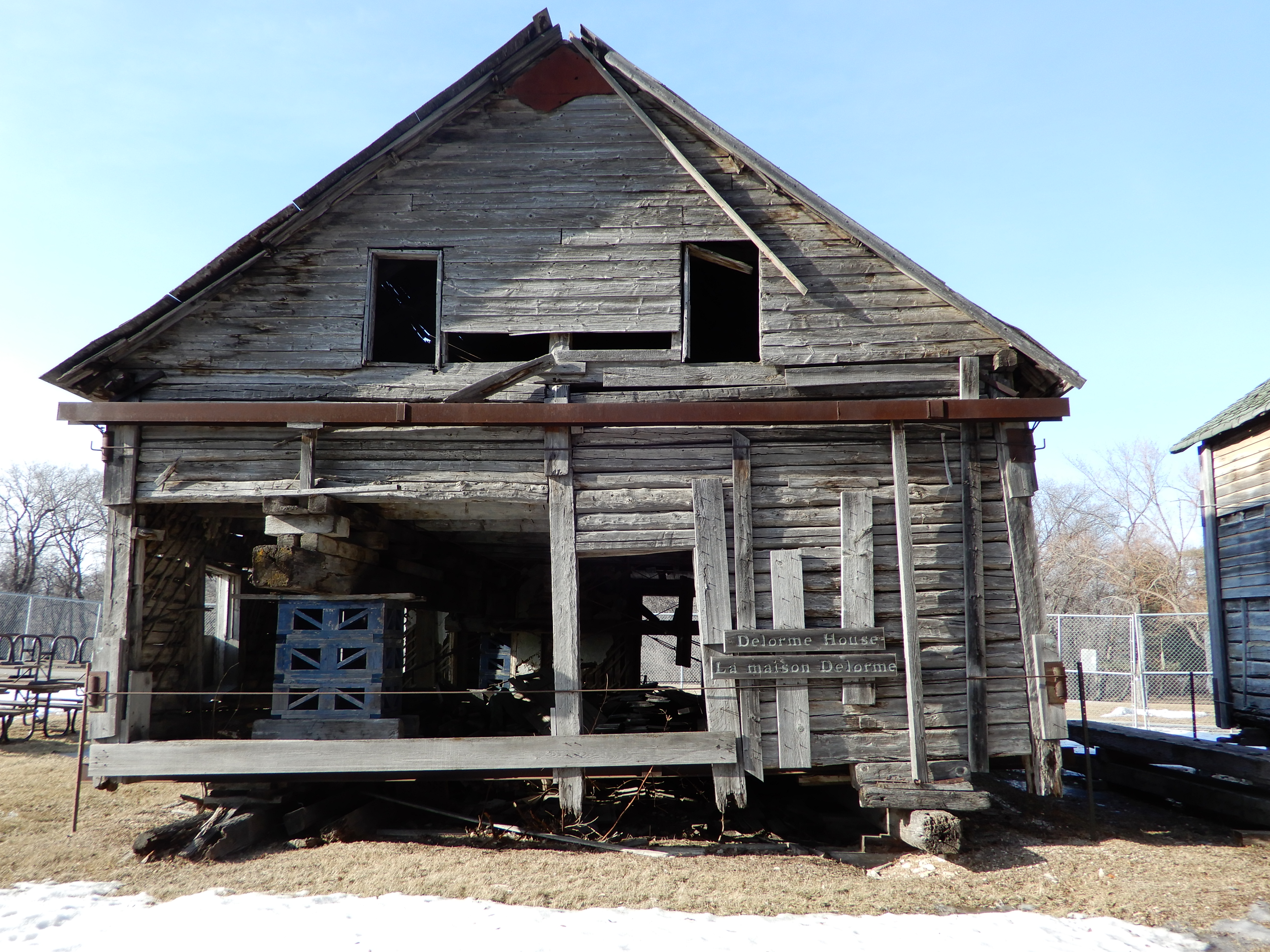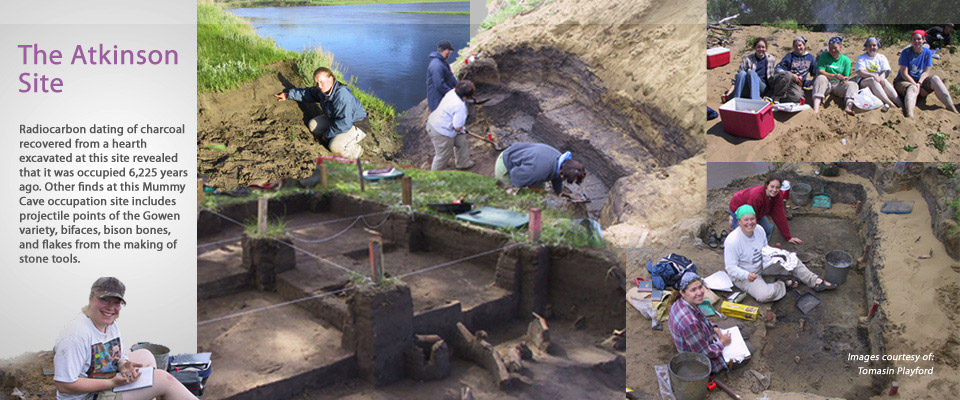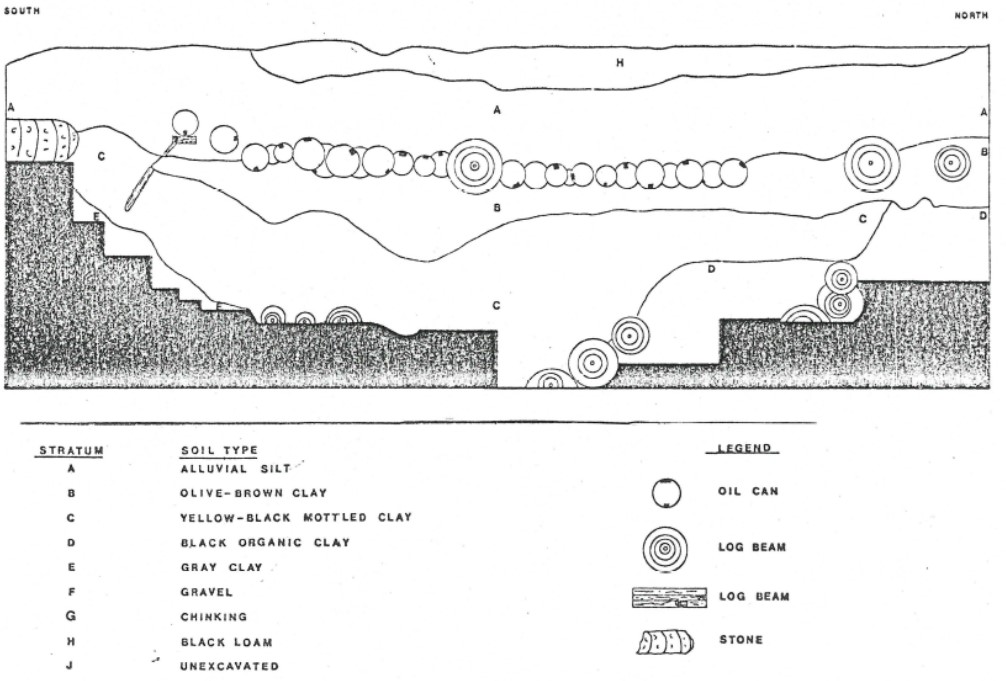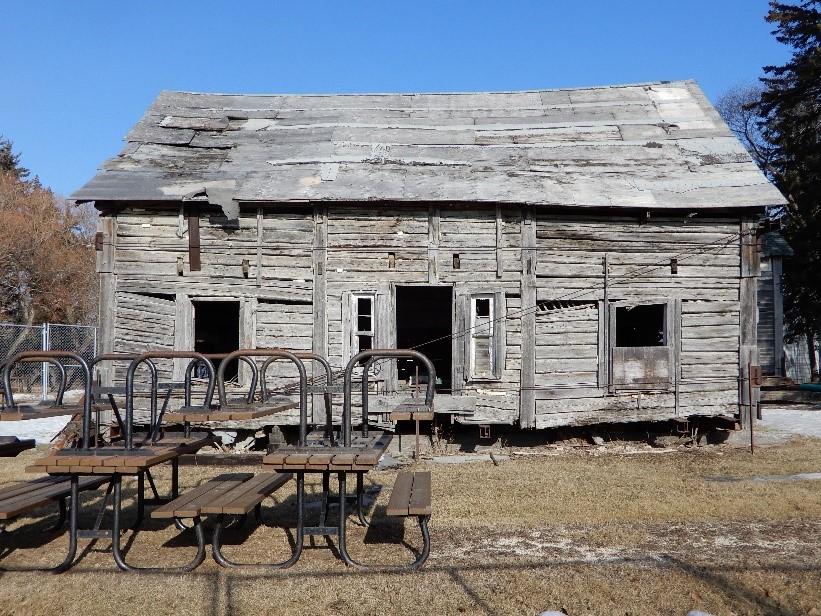Delorme House (DkLg-18)
Pierre Delorme was a successful Métis “Farmer-Merchant” and politician who lived in the Parish of St. Norbert with his wife Adelaide (nee Beauchemin). He was a member of Louis Riel’s Provisional Government then was elected to the House of Commons in Ottawa, serving until 1879. Upon returning to the Red River Settlement, he raised cattle and established a way station for travelers at his home on Lot 21 outside of St. Adolphe. The family lived west of the Red River until 1881 when they moved to the east side opposite the original homestead. Archaeologists from Manitoba Historic Resources Branch conducted excavations at the site of the original pre-1881 house in 1981. The family home and as many as four outbuildings had been constructed at that location. A cellar located close to the original house yielded an extensive collection of artifacts. On the basis of ceramic styles, the material dated from 1860 to 1880; the oldest datable artifact was a coin minted in 1854. A study of tree-rings from the oak timbers used to construct Delorme House had outer rings dating to 1854.
|
Delorme House cellar stratigraphy (from McLeod 1985) |
When compared to other sites in the Red River Settlement, the faunal assemblage (animal bones) and ceramics recovered from the Delorme House cellar were unusual. Given the status of the family, one might expect to find bones from the finest cuts of beef and expensive china; instead, 50% of the bones were from less desirable cuts of meat. The cattle Pierre Delorme raised were slaughtered and sold to the Fort Garry market. Cheaper cuts of beef were likely fed to the travelers who stayed at the way station ran by the Delorme family. The family dined on higher quality cuts of beef, and both low and high quality cuts of pork. The quality of the ceramics recovered was also quite low. The fragments of plates, saucers, bowls and cups exhibited evidence of storage abrasion and wear marks. The extensive wear and tear on the dinnerware suggests the pieces found during the excavation were primarily fragments of those used to serve the travelers staying at the way station. Based on raw data frequencies, only 16% of the artifacts were related to subsistence activities and classed as “kitchen”, which was quite low. During excavations at other Red River Settlement residences, kitchen artifacts represented between about 29% and 69% of the recoveries. Almost 63% of the artifacts recovered from the site were classed as “architectural”, which was a much higher proportion than other houses in the Red River Settlement. The number of nails recovered seems to indicate that the house and outbuildings were extensively repaired. About 12% of the artifacts were part of the “activities group”, including miscellaneous hardware, organic “botanical” items and toys. Another 6% of artifacts related to “clothing”, mainly buttons, pins, beads and shoes.
The Delorme House was donated to the St. Norbert Provincial Park and moved to its current location in the early 1980s. The building is fenced off because the structure is in fragile condition. The park, which provides an opportunity for visitors to learn about the history of the area during the Red River Resistance (1868-1870), is at the junction of the Red and La Salle Rivers just south of Winnipeg. A historic marker commemorating the homestead is located on the east end of the Pierre Delorme Bridge, which crosses the Red River along MB Provincial Road 210 near St. Adolphe.
 |
Delorme House in 2021 (Photos by M. Malainey)
|
References:
Brenner, Bonnie Lee A. and Gregory G. Monks
2002 Detecting Economic Variability in the Red River Settlement. Historical Archaeology 36 (2): 18-49.
McLeod, K. D.
1985 A Study of Metis Ethnicity in the Red River Settlement: Quantification and Pattern Recognition in Red River Archaeology. M. A. thesis, Department of Anthropology, University of Manitoba.
Province of Manitoba
2013 St. Norbert Provincial Park Management Plan, Manitoba Conservation and Water Stewardship Parks and Protected Spaces Branch, Winnipeg.
https://www.gov.mb.ca/sd/pubs/parks-protected-spaces/management_plan/st_norbert_mp.pdf
St. George, Scott and Erik Nielsen
2003 Palaeoflood records for the Red River, Manitoba, Canada, derived from anatomical tree-ring signatures. The Holocene 13 (4): 547-555.






